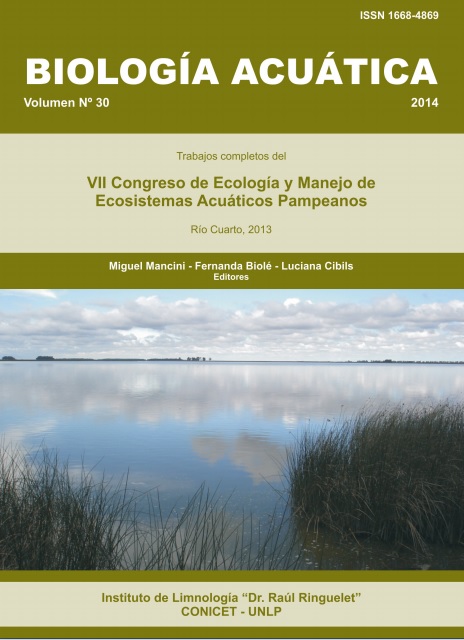Efecto de la invasión de acacia negra (Gleditsia triacanthos L.) sobre arroyos pampeanos
Keywords:
pampean streams, Gleditsia triacanthos, nutrients, producers, ArgentinaAbstract
Pampean fluvial ecosystems of low order usually lack of riparian vegetation. In recent years the invasion of honey locust (Gleditsia triacanthos L.) has caused changes in landscape composition. The aim of this study was to evaluate the effect of honey locust invasion on pampean streams. Three reaches with different degree of invasion were selected and compared with three control reaches with no canopy. In order to evaluate the effect of invasion, nutrients (soluble reactive phosphorus, ammonium and nitrates), biomass of producers (seston, macrophytes, periphyton and phytobenthos) and net production in each reach were determined. Significant differences were observed for all of variables estimated between reaches with and without canopy, but not in all cases. The amount of variables with significant differences between both reaches rises following a gradient of increasing invasion levels. Furthermore, differences are more pronounced with increasing percentage of honey locust coverage on the stream. We conclude that sustained invasion of honey locust modifies the concentration of nutrients in water, the biomass of some communities and the production of these communities. This effect could be avoided with early management of the invasion of honey locust.





















